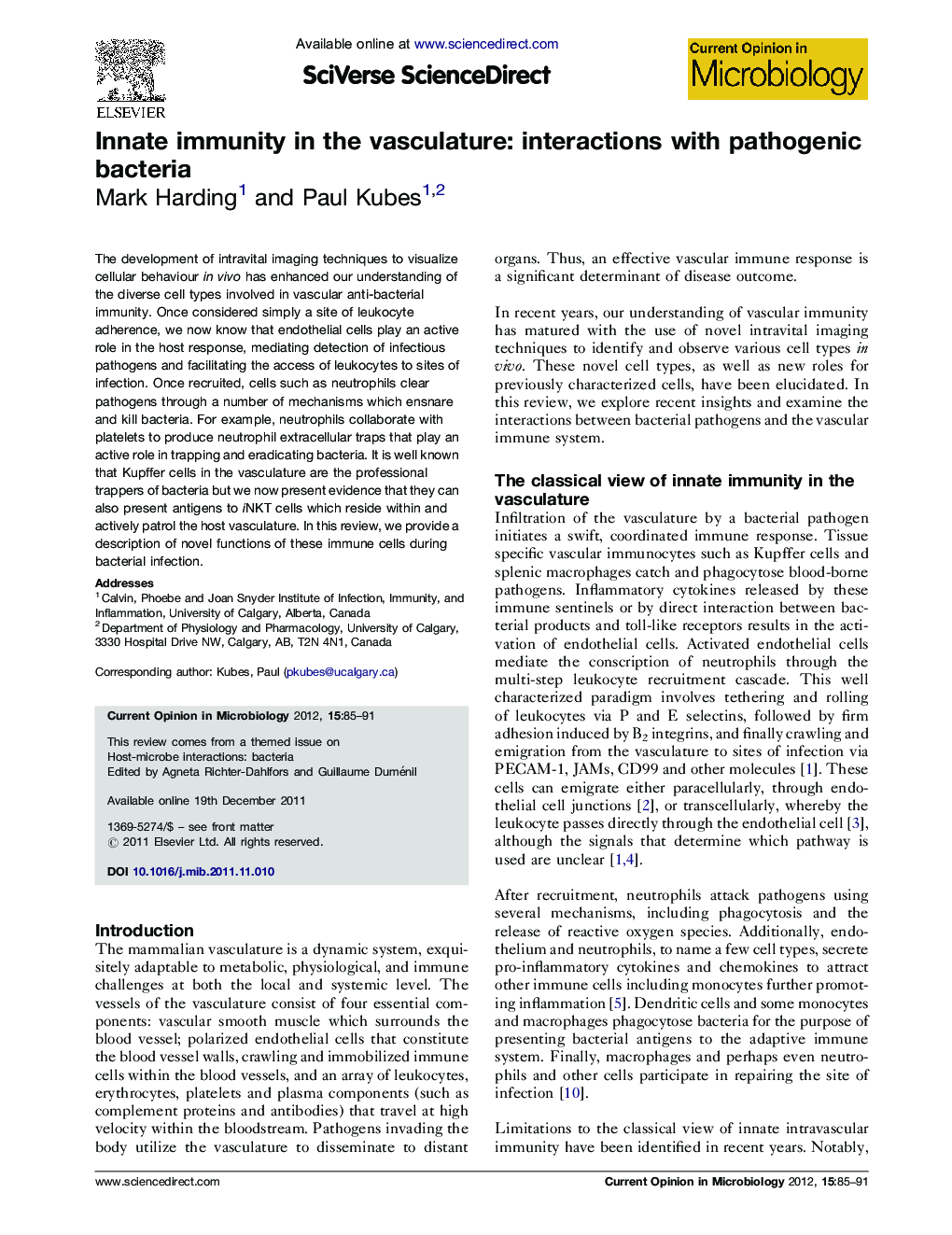| Article ID | Journal | Published Year | Pages | File Type |
|---|---|---|---|---|
| 3399195 | Current Opinion in Microbiology | 2012 | 7 Pages |
The development of intravital imaging techniques to visualize cellular behaviour in vivo has enhanced our understanding of the diverse cell types involved in vascular anti-bacterial immunity. Once considered simply a site of leukocyte adherence, we now know that endothelial cells play an active role in the host response, mediating detection of infectious pathogens and facilitating the access of leukocytes to sites of infection. Once recruited, cells such as neutrophils clear pathogens through a number of mechanisms which ensnare and kill bacteria. For example, neutrophils collaborate with platelets to produce neutrophil extracellular traps that play an active role in trapping and eradicating bacteria. It is well known that Kupffer cells in the vasculature are the professional trappers of bacteria but we now present evidence that they can also present antigens to iNKT cells which reside within and actively patrol the host vasculature. In this review, we provide a description of novel functions of these immune cells during bacterial infection.
► Endothelial cells alone can initiate an immune response and leukocyte recruitment. ► During infection iNkt cells can be activated by cytokines and innate signalling. ► Platelets interact with neutrophils to enhance the formation of neutrophil extracellular traps.
